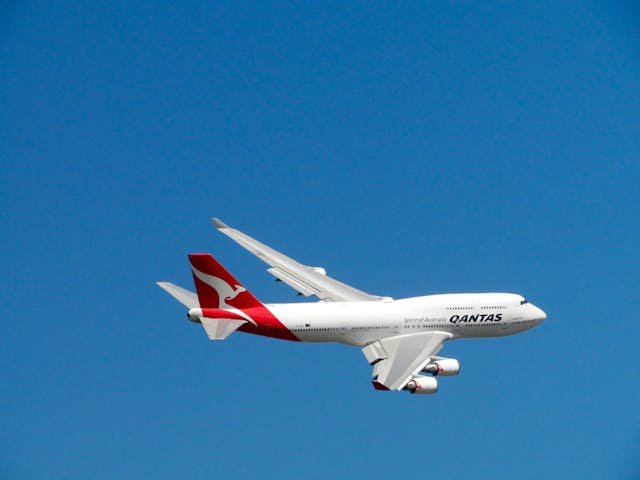For first-time passengers, air travel blends thrill with possible worry. Strict rules, complicated procedures, and foreign languages can overwhelm the unready tourist. Good preparation turns this perhaps frightening event into a controllable trip. Having complete knowledge of every travel phase, airport navigation abilities, and extensive preparation will help you react better to unanticipated events throughout your trip. Planning and information can help you concentrate on your goal instead of stressing about the travel.
1. Master Pre-Flight Documentation and Check-In Procedures
Stress-free plane travel is mostly dependent on the gathering and arrangement of necessary papers. Ensure your passport expiration date covers at least six months past your planned return for trips abroad. Usually, domestic flights require government-issued photo identification matching your ticket details. To maximize your airport experience with digital check-in choices, at least one day before departure, get your flight tickets. Download the smartphone app of your carrier to get flight alerts, access electronic boarding passes, and keep updated about gate changes. Learn about baggage policies to avoid unanticipated terminal cash charges. For quick security screening on several visits, think about TSA Pre-Check or Global Entry. Make a digital backup of every travel document kept on cloud storage and distribute access to a trustworthy person at home should an emergency strike during your trip.
2. Pack Strategically for Security and Comfort
Knowledge of Transportation Security Administration (TSA) rules starts with effective packing. Liquids, gels, and aerosols have to follow the 3-1-1 rule: one bag per passenger, containers no bigger than 3.4 ounces (100 ml) placed in one quart-sized transparent bag. To expedite the security screening procedure, wear easily detachable shoes and a few metal items. Pack necessary prescriptions in carry-on bags together with appropriate documents. Electronic devices call for particular care; make sure they have enough charge for security checks, where turning them on may be required. Bring along some noise-canceling headphones, a face mask, and a neck pillow for flights that are going to be longer. Remember that because of fire safety rules, gill batteries and other lithium-ion power sources must stay in carry-on baggage; they never belong in checked bags. For trips over four hours, think about wearing compression socks to increase lower extremity circulation.
3. Navigate Airport Procedures with Confidence
Arriving at the airport three hours before foreign departures and at least two hours before domestic flights gives time for unanticipated delays. Use the plans on most airport websites or apps to get to know how the airport is laid out. For security reasons, you have to take off electronics bigger than cell phones, bags with liquids, and sometimes shoes and light coats. Carefully follow what TSA agents say and get your things ready for review before they reach the conveyor belt. Clear security, then immediately check your departure gate since assignments can change. If at all possible, take advantage of priority boarding choices, especially in cases involving overhead bags. Watch flight status displays often for announcements and updates. Most airports have mobile charging stations close to gates so you can make sure devices stay running for the length of your trip.
4. Understand In-Flight Etiquette and Comfort Tips
The limited area of aircraft cabins calls for more awareness of common courtesy. Even if you have flown before, pay close attention to safety demonstrations since different aircraft types follow different processes. Find out where the emergency exits are on board. Usually, middle-seat customers give armrests top importance for both comfort and the less-than-desirable sitting arrangement. Particularly when food is being served, gently and carefully recline chairs. During the journey, keep hydrated; perhaps cut back on caffeine and alcohol, as these could cause water loss at altitude. By yawning, eating, or chewing gum, combat ear pressure variations both during flight and landing. Even if you are just standing in your seat area or walking to the bathroom when the seatbelt indicator is off, move periodically on longer flights to boost circulation.
5. Prepare for Arrival and Post-Flight Procedures
Arriving plans help to simplify the last phase of flying. Accurate, complete customs declaration forms during the trip for foreign flights can help speed up processing. Before leaving, have your passport and filled-out documents easily available. Advance research on ground transportation choices at your location, including backup plans for late arrivals. The best way to navigate a place with spotty internet is to obtain offline maps of the area in advance. Check baggage claims locations using flight information display data following landing. Before check-in, take pictures of your bags and apply distinctive marks to help quickly identify them among crowded baggage claim lines. Before starting your trip, research the terminal layout of your intermediate airport in order to maximize restricted connecting windows between flights. Being sure of yourself and following the signs can help you get around new arrival airports quickly.
Conclusion
From paperwork and packing to knowledge of airport policies and in-flight procedures, first-time flying calls for preparation in several spheres. Knowing these key components ahead of time helps you build the basis for stress-free travel. Recall that the staff members of airlines are ready to help you during your trip. Proper preparation and reasonable expectations help you to make air travel a fun component of your total trip.
You May Also Like: The Evolution of Air Ambulance Technology: Enhancing Care in Mumbai’s Air Ambulances










